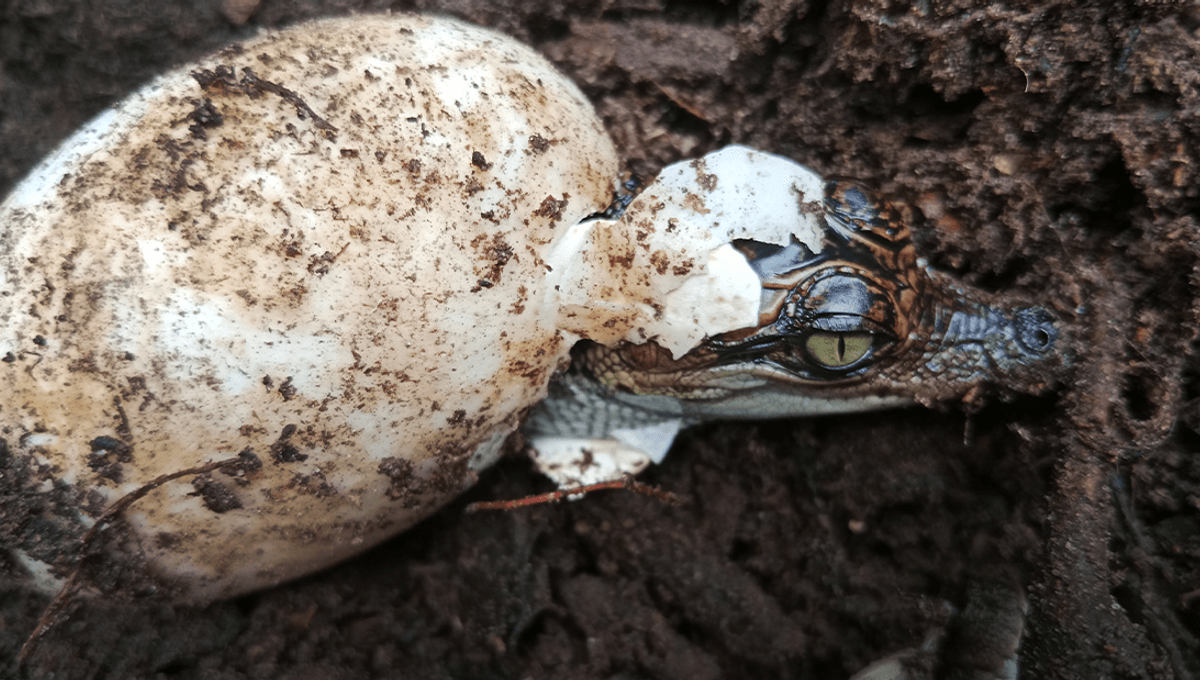
Habitat loss and destruction is one of the key issues facing species today. Fortunately, conservation groups are working hard, both with species in conservation areas and with those populations that need to be raised in captivity, to bolster the population. Now, for one species at least, it seems the results are paying off as the critically endangered Siamese crocodile population is increased by 60 new arrivals.
At one point, the Siamese crocodile (Crocodylus siamensis) was thought to have gone extinct, but was rediscovered in 2000. Since the rediscovery, local communities and organizations have launched a conservation breeding program to help increase numbers. This involved breeding these crocodiles in captivity and then releasing the offspring back into the wild. To date, the team have released nearly 200 Siamese crocodiles back into the wild from this program.
This is the beginning of the road for this population’s journey to recovery.
Pablo Sinovas
A further boost for the population came in May 2024, when local people in the Cardamom Mountains, Cambodia, found three nests. What is even more remarkable is that these nests were discovered in an area that the captive bred populations had not been released, suggesting that the population is beginning to expand and recover. The finding was swiftly followed by a second discovery of two more nests in a different area. At the end of June, 60 healthy Siamese crocodiles were hatched, representing a real positive outcome for this species.
“As the largest wild Siamese crocodile breeding event recorded in Cambodia this century, it is incredibly encouraging. While a large proportion of the 60 hatchlings may not survive during the first year due to natural causes, such as predation, some will likely survive and start breeding 8-10 years from now. This is the beginning of the road for this population’s journey to recovery, after two decades of very limited breeding in the wild,” Pablo Sinovas, Country Director, Fauna & Flora Cambodia Program, told IFLScience.
Siamese crocodiles are a freshwater species that were once widespread throughout Southeast Asia, but now their range is restricted to Cambodia, Thailand, and Vietnam. The crocs feed on snakes, frogs, and fish. While a total population estimate is not known, the best guess suggests there are around 400 individuals. Siamese crocodiles have a slow life history, taking nearly a decade to reach sexual maturity. They have been driven to this point due to hunting for the crocodile skin trade as well as competition for rice fields, explains Fauna & Flora International.
To ensure these new arrivals have a safe environment to grow up in, the international teams have worked with governments and locals to put protections in place for these critical habitats.
“We work with local community wardens, who patrol these habitats on a regular basis to monitor and deter threats. We also work with relevant government departments so protection measures are enforced, and to afford some of the most important sites for Siamese crocodiles additional protection in the form of locally-managed crocodile sanctuaries,” continued Sinovas.
The Chorng Indigenous people have also been instrumental in the survival of the Siamese crocodile, explained Sinovas. “The Chorng Indigenous people revere Siamese crocodiles as sacred. They have long been protecting the species in the Cardamom Mountains for spiritual reasons and this may be the reason why it remains there.”
This entire project highlights the incredible benefit of long-term conservation projects in collaboration with governments, charities, and local people to benefit the survival of a species.
“We have been working closely with Fauna & Flora to protect this critically endangered species for several years, and we were excited to have found these crocodile nests. This discovery indicates that our conservation efforts have paid off, and I believe that with our ongoing conservation efforts, the population of Siamese crocodiles will continue to increase in the future,” said Toy Chorn, a community warden, in a statement sent to IFLScience.
Source Link: Critically Endangered Siamese Crocodile Population Boosted By 60 Adorable Hatchlings